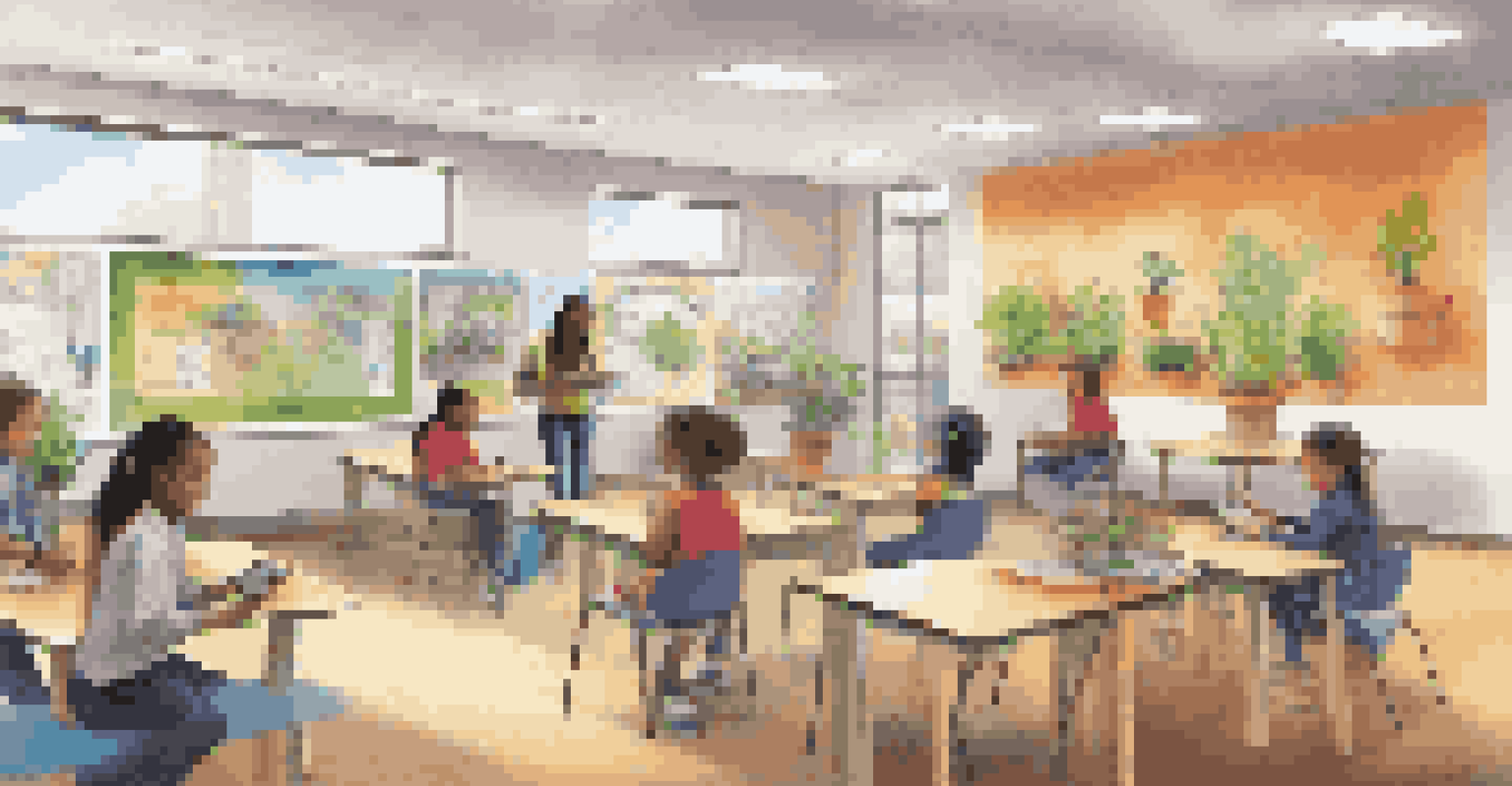Neuroscience of Learning and the Effects of Classroom Design

The Role of Neuroscience in Learning Processes
Neuroscience plays a crucial role in understanding how we learn. It examines the brain's structure and function, revealing how neural connections are formed and strengthened during learning experiences. This knowledge helps educators develop strategies that align with how the brain processes information, making learning more effective.
Education is not the filling of a pail, but the lighting of a fire.
For instance, when students engage in hands-on activities, their brains are actively forming connections that enhance memory retention. This is often referred to as experiential learning, which shows that the brain thrives on real-world applications. By incorporating such methods, educators can harness the brain's natural learning processes.
Understanding these mechanisms is essential for creating effective educational environments. By applying neuroscience principles, educators can tailor their approaches to meet the diverse needs of students, ultimately fostering a more inclusive and effective learning atmosphere.
How Classroom Design Influences Learning Outcomes
Classroom design significantly impacts students' learning experiences and outcomes. Elements such as seating arrangements, lighting, and color schemes can enhance or hinder focus and engagement. For example, flexible seating options promote collaboration and movement, which can boost motivation and creativity.

Moreover, natural lighting has been shown to improve mood and concentration levels in students. When classrooms are designed with ample windows and open spaces, students often feel more energized and ready to learn. This connection between environment and learning underscores the importance of thoughtful classroom design.
In essence, a well-designed classroom can create a stimulating environment that encourages exploration and collaboration. By considering factors like layout and ambiance, educators can cultivate spaces that support optimal learning and facilitate deeper understanding.
Creating an Engaging Learning Environment
An engaging learning environment is essential for fostering student curiosity and participation. Incorporating elements like interactive displays, technology, and collaborative workspaces can create a dynamic atmosphere that keeps students interested. This engagement is crucial for effective learning, as it helps students connect with the material on a deeper level.
Tell me and I forget. Teach me and I remember. Involve me and I learn.
For example, classrooms that utilize technology such as smart boards and tablets allow students to explore subjects in a hands-on manner. This interactive approach not only makes learning fun but also caters to different learning styles. By engaging students actively, the likelihood of retention and understanding increases.
Thus, a focus on creating engaging environments can transform the traditional classroom experience. When students feel involved and excited about their learning, they are more likely to excel academically and develop a love for lifelong learning.
Understanding Different Learning Styles
Recognizing that students have different learning styles is vital for effective teaching. Some may learn best through visual aids, while others might prefer auditory or kinesthetic methods. Neuroscience has shown that accommodating these varied styles can enhance the learning experience for all students, promoting inclusivity.
For instance, incorporating visual elements like diagrams and charts can benefit visual learners, while group discussions and presentations can cater to auditory learners. Additionally, hands-on activities can engage kinesthetic learners, helping them grasp concepts more effectively. Understanding these styles enables educators to diversify their teaching strategies.
Ultimately, embracing different learning styles fosters a more personalized educational experience. By designing classrooms that consider these variations, educators can better support each student's unique learning journey, leading to improved outcomes and greater student satisfaction.
The Impact of Neuroplasticity on Learning
Neuroplasticity refers to the brain's ability to reorganize itself by forming new neural connections. This remarkable feature highlights the brain's capacity to adapt and learn throughout a person's life. For students, this means that learning is not confined to a specific age or stage; it is a lifelong process.
In the classroom, fostering an environment that encourages growth and exploration can stimulate neuroplasticity. For instance, challenging students with complex problems or new concepts can promote critical thinking and adaptability. By embracing challenges, students can strengthen their cognitive abilities and enhance their learning potential.
Understanding neuroplasticity empowers educators to create lessons that encourage exploration and resilience. By nurturing students' ability to adapt and learn, teachers can significantly impact their academic and personal development.
The Importance of Collaboration in Learning Spaces
Collaboration among students is a powerful catalyst for learning. When students work together, they share diverse perspectives and ideas, enriching the learning process. Collaborative environments not only foster communication skills but also encourage critical thinking, as students challenge and refine each other's viewpoints.
Classroom designs that facilitate group work—such as round tables or open spaces—can enhance collaboration. These setups encourage students to engage with one another, promoting a sense of community and teamwork. When students feel connected to their peers, they are more likely to participate actively and take ownership of their learning.
Ultimately, fostering collaboration within the classroom can lead to deeper understanding and retention of knowledge. By creating spaces that prioritize teamwork, educators can cultivate a culture of shared learning that benefits all students.
Designing Classrooms for Mental Wellbeing
Mental wellbeing is increasingly recognized as a crucial factor in effective learning. A classroom environment that prioritizes mental health can significantly enhance students' ability to focus and thrive. Elements such as calming colors, greenery, and quiet spaces can create a supportive atmosphere that promotes emotional wellbeing.
For example, incorporating plants into the classroom has been shown to reduce stress and improve air quality, contributing to a healthier learning environment. Additionally, creating areas for students to take breaks can help them recharge and refocus, ultimately improving their academic performance.

By designing classrooms with mental wellbeing in mind, educators can create spaces that support not only academic success but also the overall health of their students. This holistic approach to classroom design ensures that learning is not just about academics, but also about nurturing the mind and spirit.